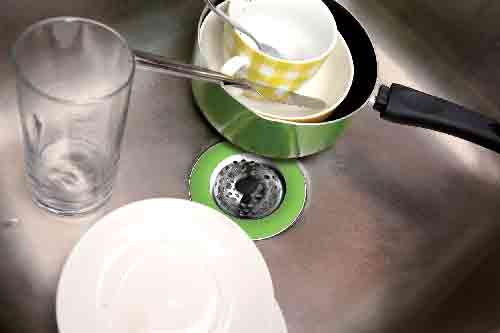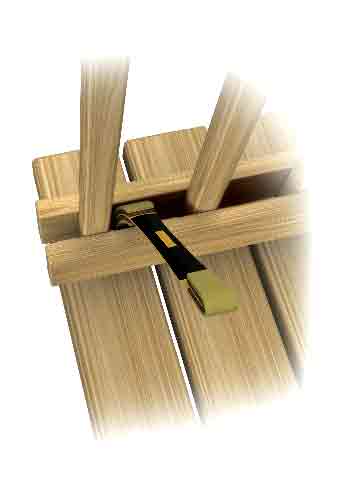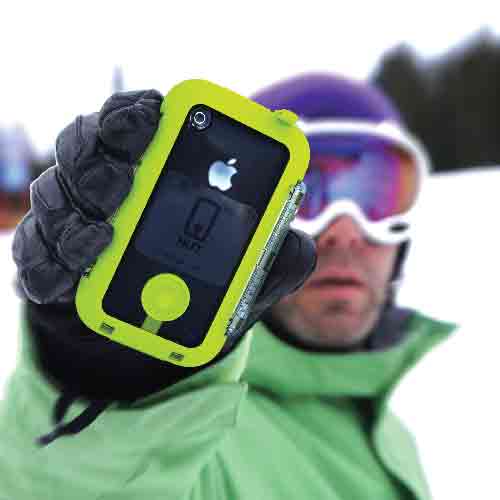Latest News
March 1, 2012
By Josh Mings
We uncover an idea, visualizing it in our mind—relishing with anticipation the discovery of each step. Throughout the product development process, using tools and software to form our idea, we play in the iteration of the design, causing the idea to come alive. Designing products has always been a visual process. At the core, it’s an exercise in tweaking edges, surfaces and perspective, optimizing and illustrating each iteration from concept through manufacturing and on to marketing.
Increasingly, the “product” may be displayed in the catalog or on the website storefront long before an engineering drawing has been created, die has been machined or a pattern cut. The most phenomenal part of iterating and visualizing the design process is that one, many or even an entire community can do it.
Quirky Designs Socially
For those with ideas, a community of creators now exists at the industrial design firm Quirky. The website is home to tens of thousands of online members, ordinary people using ordinary consumer products with a few ideas on how make them safer, less wasteful or just easier.

Renders are posted to the Quirky website to foster member discussion.
Image courtesy of Luxion.
Within the site, product ideas are discussed and voted on as consumer mavens from around the world contemplate the subtleties of designs. Quirky then pays members for their innovations (if chosen for development) and for the product design feedback they post on other projects. Quirky differs from conventional product design firms, leveraging social media for consumer preferences and delivering new, marketable designs at an unbelievable rate.
“We can build two products per week,” says Quirky’s head of engineering, John Jacobsen. “It may seem radical, and it is. The designs are not fully developed, but we are taking the community ideas to a certain level of refinement.”
These almost-finished designs don’t immediately go off to production, but instead incubate as rendered images on the Quirky website for further community design review. The photorealistic previews spread through the member’s social networks, and also attract shoppers for cool gear through Quirky’s catalog page.
“The visual feedback is definitely a necessary component. The better the imagery and higher the fidelity, the more compelling the product is to consumers,” says Jacobsen. “People can appreciate the idea behind the innovations, but it is really the image of the design that gets the customer excited enough to follow through with a purchase.”
For many products, Quirky posts the virtual image before a product demonstration photo shoot is scheduled. Quirky’s ability to present a convincingly real product before the product is real—and do it faster than many other firms—lies in Jacobsen’s computer.
“What we are working with now is lightning fast. I have a laptop equipped with multiple processors, and I am able to get high-resolution images from an engineering model in a matter of seconds. For our group, time is of the essence, so this kind of capability is crucial,” he says. “I don’t think we would be able to do what we doing at Quirky without these tools.”
 Pensa uses renders to evaluate products before prototyping them. Image courtesy of Luxion. |
Pensa Evaluates Renders Before Prototypes
“In the past, rendering required you to have the skills of both a photographer and a computer expert,” recalls Marco Perry, principal and co-founder of Pensa. “Like a photographer, you had to understand the physics of lighting to get the right angle, shadow and reflectivity. Then you had to be computer expert, because you had to translate this understanding into numbers. You had to know what levers to pull and push inside the program to get the effects.”
New advances in software have eliminated this need for specialized expertise. Common materials like soft plastic or brushed aluminum are pre-programmed to reflect light naturally. Designers simply drag them from palettes and drop them onto a surface of a model, like a game of 3D paint-by-numbers. Rendering experts used to slave over the subtle shadows that give objects the right illusion of depth. Now the shading appears perfectly on every render.
Perry says the core purpose of rendering for designers is the same as it has been in years past: “We can view CAD data as realistically as possible before getting prototypes of it. In some cases, when we work on very large-scale equipment, like vending machines, to get a prototype is no small feat. We need to evaluate the product before it gets that far in the process.”
Okoqu Test Markets with Renderings
As many in product development are discovering, rendering isn’t just for designers anymore. Photorealistic previews are now playing a much broader role that extends beyond the engineering process. Russell Beard, head of Okoqu (pronounced “oh-koh-koo”), found out the visuals are also good at communicating business potential, even for a simple product called the NUT, an iPhone case made of durable hard-shell plastic.
“Very early on, we needed to get a measure from the biggest distributors and central retailers whether or not we should continue to develop a product to manufacture,” Beard explains. “I rendered the model to produce some really powerful visuals. Because of these renderings, the product concept received traction with people before it became a reality.”
The rendering technology offers the advantage of product photography well before the item is manufactured, he notes.

Okoqu uses rendering to gain concept approvals. Image courtesy of Luxion.
“Much of the instant output from high-speed rendering applications comes out with the same studio lighting that consumers are used to seeing in magazine ads and catalogs,” Beard says. “Pictures speak louder to merchandisers in the larger arena of business development.”
Beard says the imagery helped across the entire process. He could show his intent to manufacturing engineers, make a pitch to investors, and even connect with potential customers.
“We are still using the visuals that we created early in the process on our website and product demos,” he says. “That’s how powerful the visuals are to this project.
“The way technology has sped up communication on the business end has been phenomenal,” he adds. “For the NUT, it just helped massively.”
Rapid Rendering
Rendering used to be an afterthought to the process, a time-consuming task after design and before physical prototyping. As the technology has become more interactive, designers are looking at product components in a photo-real environment early and often, which ultimately gives you more time to design better products.
Visualizing the product development process with realistic images is becoming another means of evaluating the design itself, a way to judge the forms, materials and finishes. Where those decision used to be made internally, 3D renderings are now making it possible to visualize the completed product throughout the entire lifecycle.
Josh Mings is web marketing manager at Luxion. He is also editor at SolidSmack.com, covering 3D design, product development and related technology. Contact him via KeyShot.com.
MORE INFO
Subscribe to our FREE magazine, FREE email newsletters or both!
Latest News
About the Author
DE’s editors contribute news and new product announcements to Digital Engineering.
Press releases may be sent to them via [email protected].






